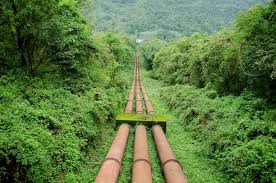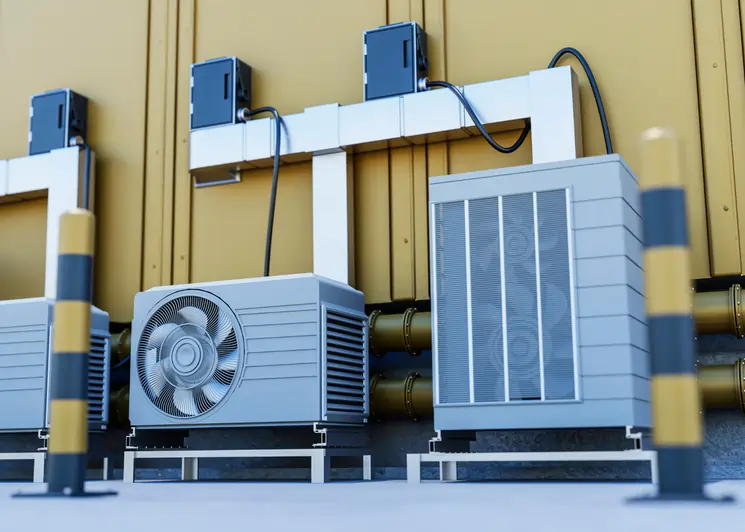Hydroelectric power plant – construction and working
Welcome back to The Mechanical post ! Today we’ll see what is hydroelectric power plant , its layout, its components, diagram, advantages and disadvantages. So let’s get started.
Introduction to Hydroelectric power plant
What is a hydroelectric power plant ?
Construction of hydroelectric power plant
The Hydroelectric Power Plant is made up of the following components:
- Reservoir and Dam
- Control Gate
- Penstock
- Surge Tank
- Water Turbine
- Draft Tube
- Generator
Layout of Hydroelectric Power Plant
Given below is the general layout or explanation od each component of the hydroelectric power plant (refer diagram below)
Reservoir and Dam
The dam is constructed on a large river to ensure sufficient water storage at a height and the dam forms a large reservoir behind it. The potential energy stored in water depends upon the height of the water level (also known as water head) the higher the water level the more is the potential energy.
Control valve
The amount of water released in the penstock is controlled by regulating the control valve. During high loads the amount of water supplied is increased whereas while at lesser loads the supply is decreased accordingly.
Surge Tank
A surge tank is a small reservoir or tank fitted between the reservoir and the turbine. The water level in the surge tank rises or falls to reduce the water hammer effect in the penstock.
Penstock
A penstock is a long steel pipe reinforced with concrete which delivers water from the reservoir to the turbine. The potential energy of the water stored in the dam is converted into kinetic energy as it flows down through the penstock due to the action of gravity.
Water Turbine
The water turbine is a type of impeller which is coupled directly to an electric generator. Its main function is to convert the kinetic energy of the water into the rotary mechanical energy.
Draft tube
The main function of the draft tube is to convert the Kinetic energy of water into pressure energy.
Generator
Tailrace
The water after passing over the turbine is then discharged through the tailrace after which the water joins the river.
What is the working principle of hydroelectric power plant ?
 |
| Tennessee Valley Authority; SVG version by Tomia / CC BY-SA |
Working of Hydroelectric Power Plant
The dam is constructed on a large river to ensure sufficient water supply and the dam forms a reservoir behind it. The potential energy stored in water depends upon the height of the water level (also known as water head) the higher the water level the more is the potential energy.
The water coming out of the nozzle is directed onto the vanes (blades) of the turbine. This high velocity water jet exerts pressure onto the vanes, thus causing it to rotate. In this way the kinetic energy of the water is converted into mechanical energy.
Fun fact
Advantages of Hydroelectric Power Plant
- As mentioned above this type of power generation is clean and green with zero pollution.
- No fuel cost and thus no fuel transportation problems.
- No standby losses.
- No waste disposal problems.
- Highly reliable.
- Can be started or stopped in less time.
- Life of the plant is about 100 years.
- Almost every dam is fitted with a hydroelectric power plant due to its high efficiency as well as clean energy.
- Operating cost is low as compared to conventional power plants.
- Due to the construction of dam the problem of flooding is reduced.
- The reservoir helps store water which benefits nearby areas especially farmers.
Disadvantages Hydroelectric Power Plant
The disadvantages of Hydroelectric Power Plant are:
- The construction cost is very high.
- Time required for construction of the full setup is much longer as compare to conventional power plants. It usually takes years to setup the hydroelectric power plant.
- Usually hydroelectric power plants are located in hilly areas, away from the city. Thus they require long transmission lines to supply power to the load. This results in increased transmission losses.
- The hydroelectric power plant requires large surface area. Thus, people residing in nearby areas are to be relocated.
- Power generation hugely depends upon the amount of water available in the reservoir. Thus inadequate rainfall can hinder power generation.
- Dams cannot be built anywhere. It requires a lot of study as well as resources.
- Bio diversity is impacted especially fishes due to the the construction of dam.
You might also like to read
Applications of Hydroelectric Power Plant
The applications of Hydroelectric Power Plant are:
- The primary application of the hydroelectric power plant is to produce electrical energy.
- The stored water can be used for agricultural purposes.
- Thermal power plants can be set up in nearby areas.
- The dam built can be used to prevent floods due to seasonal rain.
That’s an overview on Hydro-electric power plant. If you like this post or have any suggestions do let us know in the comments we would love to hear it from you. Do follow The Mechanical post on instagram, facebook and twitter.
Also do consider subscribing by clicking the subscribe button and never miss a post by us!
We’ll be back soon with another interesting article till then Keep learning and read The Mechanical post.









Useful and knowledgeable